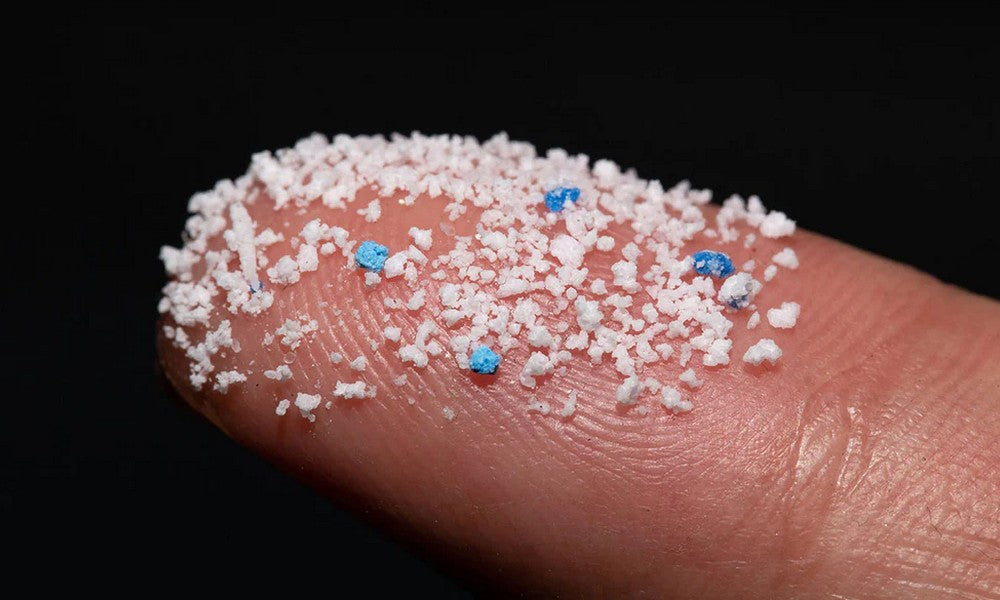In recent years there has been a lot of news about fibres in our clothes poisoning waterways. Microplastics, like the ones in the image above, are found in abundance on shorelines where wastewater is released.
But microplastics also include microfibres, tiny threads shed from fabric that are microscopic. They can be as small as 3 microns. In comparison, a human hair is about 70 microns. A US article cited 85 percent of the human-made material found on shorelines were microfibres and matched the types of material, such as nylon and acrylic, used in clothing.
These tiny particles also have the potential to impact septic systems, since most washing machines don’t filter out particles. After all, septic systems are not designed to remove nutrients or chemicals or tiny particles from wastewater, just solids. Particles that are so small are resistant to settling in the septic tank and will pass through effluent screens.
The final destination for these microplastics are our waterways. They get flushed into wastewater treatment systems, whether individual or larger treatment plants that don't have membranes effective enough to deal with them. Once they are in our waterways, they can be eaten or absorbed by marine animals, some later served up as seafood.
What to do? There are no easy answers. While technology catches up to reality, we can minimise the amount of synthetic clothing we use and also minimise the number of times we wash that synthetic clothing.
One solution is to deny microplastics entry into our septic and municipal wastewater treatment systems in the first place. Some washing machines have filters and there are also aftermarket filters that can capture the smallest particles. Researchers found that top-loading washing machines released five times more microplastics, so suggest front-loading machines to your customers.
There are no answers at all for septic filtration systems at present.

